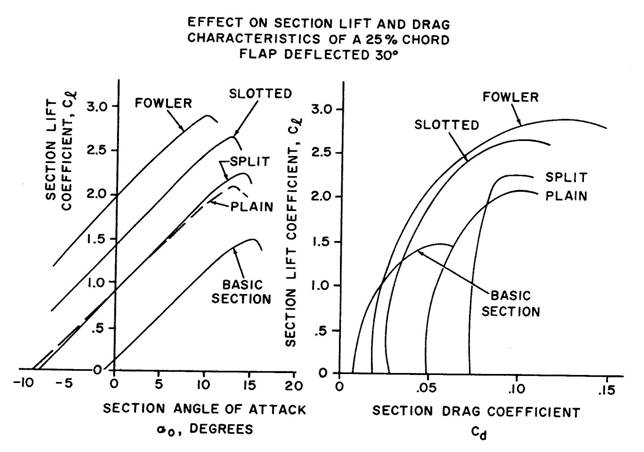Originally Posted by
PDR1
And while we're here - another similar depressingly common myth/misunderstanding is the idea that deflecting an aileron downwards increases the angle of attack of that part of a wing and risks stalling it of the wing is close to it's stalling AoA. This is not true. A lowered aileron is just a flap, and no one says "if you're close to the stall for <deity's> sake down't lower the flaps because you'll stall the wings!"
With respect PDR, I disagree. I think in a basic aircraft without slats etc, if you lower flap whilst actively maintaining the same pitch attitude of the aircraft (ie the same angle to the airflow), you *will* increase the AoA of the wing and will be closer to the stall.
So if you were very close to stall and then extended flaps without changing the pitch I think I may very well be saying "for <rude word>ing <deity's> sake you need to lower the nose captain if you are extending flap now!

In simple S&L un-accelerated stalling of an aircraft in landing configuration you have a lower nose attitude compared to the clean stalling attitude, if you were to raise the nose of a dirty configuration to a similar position for clean stall, the wings would be even more stalled.
Originally Posted by
PDR1
The lowered aileron is a flap, and just adds camber to the wing which will probably* increase the stalling AoA of that part of the wing and delay the stall.
Again I respectfully disagree.
Have a look at Aerodynamics for Naval Aviators (in my 1965 revision, page 39 and 40)

Notice how the max lift point actually reduces significantly for flap extension.
FWIW, a C172 has something like Fowler style flaps
I agree that in a sense yes ailerons are just asymmetric flaps. The difference however is in their use. Typically extending flaps involves lowering the pitch attitude to produce the same lift. Similarly it allows slower flight before reaching the critical angle (ie a lower stall speed) by increasing lift and drag. What it doesn't do is allow the aircraft to stall at a similar or higher AoA (or for simple stalls at a higher or similar pitch attitude).
The ailerons are not being used in the same way as flaps. The aircraft attitude is not being changed to account for the aileron's change to the effective shape of the aerofoil. If you have an outer wing near the point of stall and without changing its relative motion to the airflow, deflect the aileron down, you are pushing it closer to the stall.